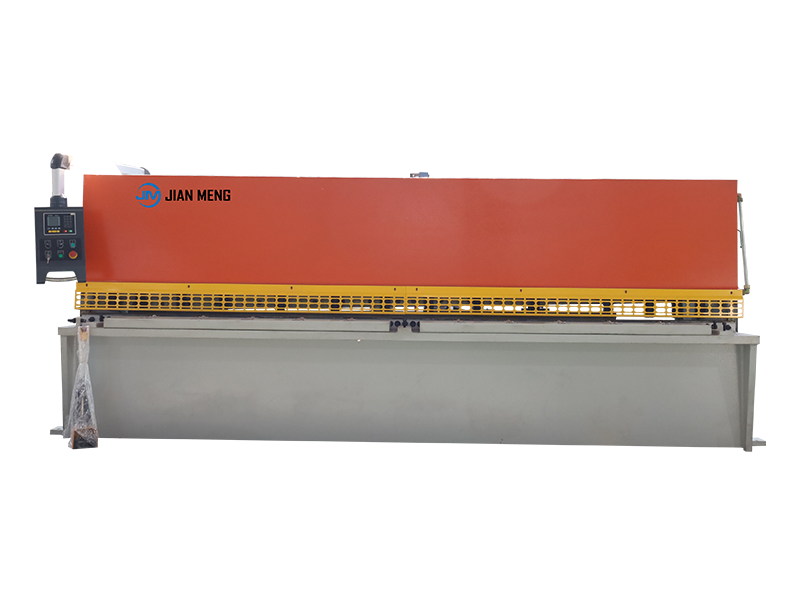Single head power hammers are critical, high-performance assets in metalworking, leveraging controlled impact energy to shape, forge, and refine metallic workpieces. Unlike manual hammers or multi-head systems (optimized for high-volume standardization), single head designs prioritize flexibility and precision control—making them indispensable for medium-batch production, custom fabrication, and artisanal metalwork. This analysis explores their technical fundamentals, core capabilities, industrial applications, and selection criteria, with a focus on how their design (e.g., variable speed drives, pneumatic-hydraulic systems) addresses diverse metalworking challenges.
1. Technical Overview of Single Head Power Hammers
At their core, single head power hammers convert mechanical or fluid power into repetitive, adjustable-impact force via a single forging head (weight: 50–5,000 kg). Their operation is defined by three key parameters:
- Impact Energy: Measured in joules (J), ranging from 500 J (light-duty for sheet metal) to 10,000 J (heavy-duty for bulk forging). This determines the maximum material thickness (e.g., 500 J for 10 mm低碳钢; 5,000 J for 50 mm alloy steel) and deformation intensity.
- Blow Frequency: 60–300 blows per minute (bpm), adjustable to match material ductility (e.g., low bpm for brittle metals like cast iron; high bpm for ductile metals like copper).
- Stroke Length: 50–300 mm, controlling the distance the hammer head travels to generate impact—critical for deep forging vs. surface refinement.
These machines are typically classified by their drive system: pneumatic, hydraulic, or hybrid (pneumatic-hydraulic), each tailored to specific load requirements.
2. Core Technical Features & Functional Advantages
Single head power hammers distinguish themselves through design innovations that enhance control, efficiency, and operator safety. Below is a technical breakdown of their key features:
2.1 Variable Speed Drive Systems
Equipped with AC variable frequency drives (VFDs) or hydraulic flow regulators, these systems enable precise adjustment of blow frequency (60–300 bpm) and impact force. Technical benefits include:
- Material Compatibility: Low speeds (60–120 bpm) for high-strength alloys (e.g., 4140 chromoly steel) to prevent cracking; high speeds (180–300 bpm) for soft metals (e.g., aluminum 6061) to ensure uniform deformation.
- Process Tuning: Fine-tune speed for specific tasks (e.g., 80 bpm for hot forging of automotive crankshaft blanks; 250 bpm for cold sizing of knife blades).
2.2 Pneumatic-Hydraulic Hybrid Drive (Common in Industrial Models)
Most modern single head hammers use a hybrid system—compressed air (0.6–0.8 MPa) to lift the hammer head, and hydraulic pressure to control impact velocity. This design offers:
- Energy Efficiency: 30–40% lower power consumption than fully mechanical drives, as pneumatic lift reduces hydraulic load.
- Soft Impact Capability: Hydraulic dampers modulate impact force for delicate tasks (e.g., surface planishing of sheet metal), avoiding over-deformation.
2.3 Self-Contained Unit Design
Integrates all critical components (drive system, oil reservoir, air compressor, control panel) into a single frame, eliminating the need for external infrastructure. Key technical benefits:
- Compact Footprint: Ideal for small-to-medium workshops (floor space: 2–5 m² for light-duty models).
- Simplified Maintenance: Centralized access to filters, seals, and lubrication points; typical preventive maintenance intervals: 500 operating hours for hydraulic oil changes, 600 hours for pneumatic seal replacement.
2.4 Safety & Control Systems
Compliant with ISO 13849-1 (functional safety) and OSHA standards, including:
- Light Curtains: Stop hammer operation if hands enter the forging zone.
- Emergency Stop (E-Stop): Hardwired cutoff for drive systems, with response time <0.1 seconds.
- Load Monitoring: Sensors detect overloads (e.g., excessive force on hardened metals) and trigger automatic shutdown to prevent component damage.
3. Industrial & Artisanal Applications
Single head power hammers excel in applications requiring customization and variable process parameters—from heavy industrial forging to high-precision artisanal work. Below are their primary use cases, with technical details and industry examples:
3.1 Hot Forging of Structural & Mechanical Components
In automotive, aerospace, and construction machinery, single head hammers are used for hot forging (temperature: 800–1,200°C for steel) of load-bearing parts:
- Automotive: Forging connecting rod blanks (material: 4140 steel) and differential gears. Impact energy of 3,000–5,000 J ensures full die penetration, while variable speed (80–120 bpm) prevents grain coarsening.
- Aerospace: Forming titanium alloy (Ti-6Al-4V) brackets for aircraft landing gear. Hybrid drives deliver controlled, low-velocity impacts to avoid titanium’s sensitivity to rapid deformation.
- Construction Machinery: Shaping bucket teeth (material: 1045 medium-carbon steel) via open-die forging. The single head’s adjustable stroke (150–250 mm) accommodates varying tooth sizes.
For industries like automotive body manufacturing, HVAC, and custom metal fabrication, single head hammers handle sheet metal (thickness: 1–10 mm) tasks:
- Shape Correction: Cold planishing (room temperature) of welded sheet metal panels (e.g., automotive door skins) to eliminate warping. Blow frequency of 200–250 bpm ensures uniform surface stress relief.
- Complex Curving: Forming mild steel (1018) sheets into architectural components (e.g., curved handrails). Variable impact force (500–1,000 J) prevents wrinkling while achieving tight radii (minimum R=5 mm).
- Edge Flanging: Creating 90° flanges on sheet metal enclosures (e.g., electrical junction boxes). Hydraulic control maintains ±0.2 mm flange height tolerance.
3.3 Artisanal Metalwork & Specialty Fabrication
Blacksmiths, knife makers, and custom metal artists rely on single head hammers for precision and creativity:
- Knife & Blade Forging: Shaping high-carbon steel (e.g., 1095, S30V) into blades. Low impact energy (300–800 J) and slow speeds (60–100 bpm) allow for controlled tapering and heat treat retention.
- Custom Ironwork: Forging decorative elements (e.g., door knockers, railings) from mild steel. The single head’s maneuverability enables intricate details (e.g., scrollwork) that multi-head machines cannot replicate.
- Musical Instrument Manufacturing: Forming brass (C26000) or copper (C11000) into trumpet bells or cymbal blanks. Pneumatic drives deliver soft, consistent impacts to preserve acoustic properties.
3.4 Cold Sizing & Finishing
In precision manufacturing (e.g., fasteners, medical devices), single head hammers perform cold sizing (room temperature) to refine dimensions:
- Fastener Production: Sizing hex bolts (material: 1022 steel) to meet ISO 4014 tolerance standards (±0.1 mm for bolt head height). Impact energy of 800–1,200 J ensures full thread formation without cracking.
- Medical Implants: Finishing titanium bone plates. Low-force impacts (200–500 J) and sterile lubricants (food-grade mineral oil) maintain biocompatibility.
4. Performance Advantages Over Traditional Methods
Single head power hammers outperform manual hammers and specialized machines in key metrics:
| Metric | Single Head Power Hammer | Manual Hammer | Multi-Head Power Hammer |
|---------------------------|-------------------------------------------------------|----------------------------------------------------|--------------------------------------------------|
| Productivity | 300–500% faster (e.g., 20 connecting rod blanks/hour) | 1–2 blanks/hour (operator-dependent) | 50+ blanks/hour (but limited to standard parts) |
| Precision | ±0.2 mm dimensional tolerance; uniform grain flow | ±1–2 mm tolerance; inconsistent deformation | ±0.1 mm tolerance (but inflexible for custom work)|
| Material Versatility | Handles 1–50 mm thicknesses (steel, aluminum, titanium)| Limited to <10 mm soft metals | Optimized for 5–20 mm standardized materials |
| Operator Safety | Reduces repetitive strain injuries (RSIs) by 80%;Light Curtains | High RSI risk; no automated safety features | Similar safety features but larger footprint |
5. Technical Selection Criteria
When choosing a single head power hammer, align specifications with application requirements using these technical parameters:
5.1 Impact Energy & Material Compatibility
- Light-Duty (500–1,500 J): For sheet metal (<10 mm) and artisanal work (knives,铁艺).
- Medium-Duty (1,500–5,000 J): For automotive components (connecting rods, gears) and structural steel (<30 mm).
- Heavy-Duty (5,000–10,000 J): For bulk forging (construction machinery parts, aerospace brackets) in thick metals (>30 mm).
5.2 Drive System Type
- Pneumatic: Best for light-to-medium tasks (low noise, 70–85 dB); ideal for workshops with compressed air infrastructure.
- Hydraulic: Higher impact force for heavy-duty forging; requires oil cooling systems for continuous use.
- Hybrid (Pneumatic-Hydraulic): Balanced efficiency and force; optimal for mixed applications (e.g., forging + sheet metal work).
5.3 Durability & Component Materials
- Hammer Head: H13 hot work tool steel for heat resistance (up to 600°C) in hot forging.
- Hammer Rod: 4140 chromoly steel (tensile strength: 800 MPa) for impact resistance.
- Frame: Welded A36 steel (yield strength: 250 MPa) with vibration damping to reduce machine wear.
5.4 Maintenance Accessibility
- Wear Parts: Choose models with quick-change pneumatic seals and hydraulic filters (e.g., spin-on filters for 5-minute replacement).
- Lubrication: Automatic grease systems (e.g., 12-point distribution) reduce manual maintenance time by 50%.


 English
English  中文
中文  Arabic
Arabic  Russian
Russian  Spanish
Spanish  Portuguese
Portuguese  French
French  German
German  Hindi
Hindi  Thai
Thai  Vietnamese
Vietnamese  Khmer
Khmer  Italian
Italian  Turkish
Turkish  Korean
Korean  Belarusian
Belarusian 


